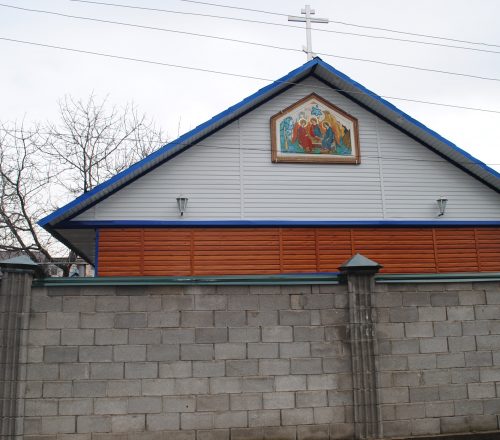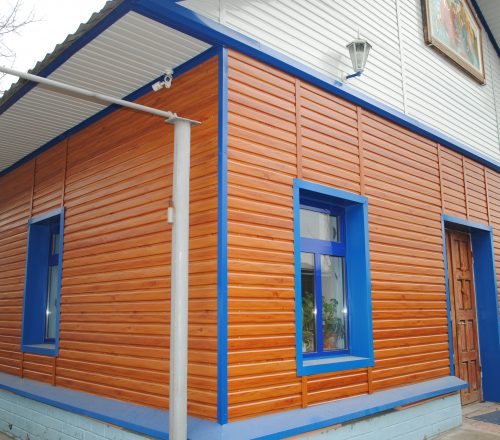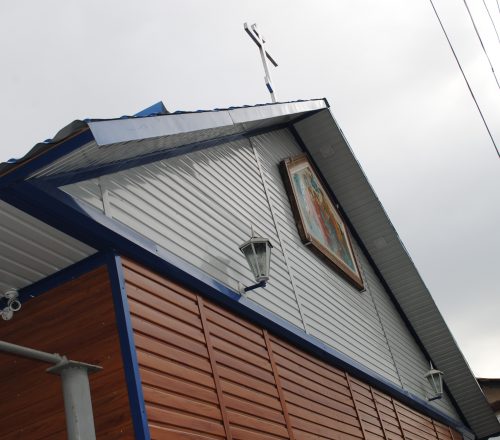There is no exact data available on the emergence of Orthodoxy in southern Kyrgyzstan. However, according to Ekaterina Ozmitel, doctor of historical sciences, a small Orthodox community in Jalal-Abad region first appeared in the 1930s. It gave shelter to priests, nuns and believers from Russia and Kazakhstan, who were persecuted by the Soviet government.
Follow us on LinkedIn
*This publication was prepared as a series of CABAR.asia articles dedicated to raising awareness on religious diversity in Central Asian countries. The authors do not seek to promote any religion. The Orthodox community of Jalal-Abad was officially registered in 1945. At the same time, the believers purchased a private house, which was reconstructed as a place of worship. According to rector Sergei Arbuzov, internal partition walls were removed, supporting structures were strengthened and the altar was completed. From the outside, the Dormition of the Mother of God Temple remained the same with some renovations made this year only. According to Ekaterina Ozmitel, an author of monograph “Orthodox temples of Kirghizia in the 19th-21st centuries”, in 1956 Jalal-Abad had about 6 thousand believers. However, in early 60s, the temple was closed again. The parish opened again back in the 90s, and was registered in July 21, 1997.

Sergei Arbuzov has been the rector for the last two years. In addition to the worship service at the temple in Jalal-Abad, he performs worship services at the temple of Kok Zhangak on first Sunday of every month, in the village of Sovetskoye twice a year, and at the chapel in the village of Blagoveschenka on the Parents’ Day and commemorative days.

– I was born in Bishkek, but was referred to serve to the city of Jalal-Abad. Our organisation has enough problems, just like any other organisation, but we manage to solve them with God’s help.
On public holidays, worship services are attended by nearly 130-140 people. On Sundays, the number of parishioners is 30 to 50 people. It all depends on the weather – on clear days our visitors may be from adjacent villages. However, only 20 people attend the church on a regular basis. They keep in touch with us, take part in all worship services and make donations.
In the south, people have stronger belief because they are few, yet their life here is harder.
We have a mosque nearby and people pass by our door to attend namaz and we always greet each other, wish each other happy holiday greetings. I mean I have not felt any discrimination against the church so far; everything is fine.
We also have good relations with the local administration. If we have any problems, they always try to protect us. Intelligence service officers have come to us and told us to contact them in case of any provocations.


Despite the non-uniform appearance of the bell tower, all bells sound virtually as they are supposed to. Small bells were brought from the temple in Kok Zhangak with only five parishioners left. We made big bells ourselves.
“We casted the mantles by ourselves, checked the sound, then adapted the pitch. They have various lengths for a reason. Some are shorter, some are longer. We checked the sound of bells on the internet and made our bells sound like them,” Arbuzov said. The temple has ancient icons of St. Nicholas and St. Seraphim of Sarov. According to the rector, no one knows when and where from they appeared, but oldest parishioners said they were in the temple in the late 40s. According to the representative of the State Committee for Religious Affairs in Jalal-Abad region, Nurbek Kaisarbaev, the region has 21 active Christian organisations. The most active one is the Orthodox community.
The temple has a Sunday school with about 40 children. Teachers teach children on a voluntary basis, they teach them the basic concepts of Orthodoxy, tell them about the commandments and the law of God. Also, they hold handicraft classes, and children prepare performances for holidays.
According to Sergei Arbuzov, the parishioners of the Orthodox temple in Jalal-Abad are Russians, and also an ethnic Kyrgyz and a few gypsies. “They visit our temple easily. I have not heard of any problems. Ethnic Uzbek women also visit us to take holy water. Sometimes people of other ethnic backgrounds visit us to place candles; many foreign students visit us.”This publication was produced under IWPR project «Forging links and raising voices to combat radicalization in Central Asia»






